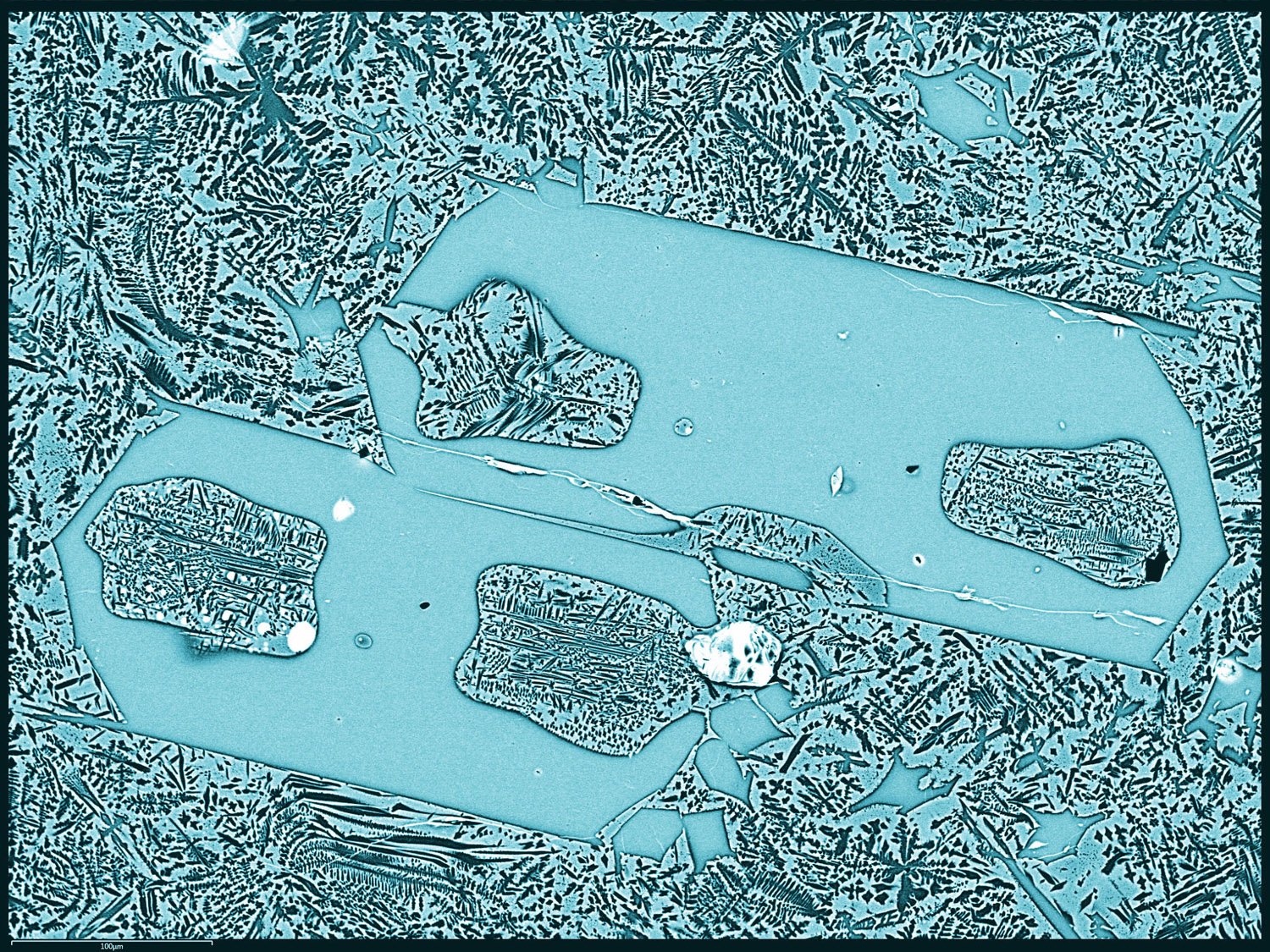Cardiff University scientists and collaborators at the University of Bristol and Open University have revealed the true extent of the internal ‘plumbing system’ that drives volcanic activity around the world.
By examining pockets of magma contained as inclusions within crystals the large chambers of molten rock which feed volcanoes have been revealed to extend up to 16 km beneath the Earth’s surface.
The new study, published today in Nature, challenges our understanding of ocean volcanoes in terms of their underlying structure, with previous studies suggesting magma chambers were located up to 6 km below the surface.

Interconnected magma chambers and reservoirs are the key driver of the dynamics of volcanic systems around the world, so understanding their nature, in terms of their vertical extent and structure, is a fundamental step towards understanding how volcanoes are supplied with magma, and, ultimately, how they erupt.
Mid-ocean ridges in particular are the most extensive volcanic system on our planet, forming a roughly 80,000 km-long network of undersea volcanoes along which 75 per cent of Earth’s volcanism occurs.
[ad_336]
However, because these volcanoes are often located under thousands of metres of water, and in some cases, under permanent sea ice, we are only just starting to understand what the subsurface architecture, or magma plumbing system, of these volcanoes look like.
Magma plumbing systems which exist beneath volcanoes at the Earth’s surface can be thought of as a series of interconnected magma conduits and reservoirs, much like the pipes and tanks that make up plumbing systems in a house, instead at mid-ocean ridges the tap is a volcano.
In order to delve inside the magma plumbing system of mid-ocean ridges, the scientists studied common rock-forming minerals olivine and plagioclase that grew within the Gakkel mid-ocean ridge located beneath the Arctic Ocean.
Importantly, these minerals act as tape recorders from which changes in the physical and chemical conditions of the environment within which they grew can be measured. This allowed the scientists to determine what processes occurred within these systems and, critically, at what depths minerals crystallise in magma reservoirs.
[rand_post]
Lead author of the study, PhD student Emma Bennett, from the School of Earth and Ocean Sciences, said: “To calculate the depths of magma reservoirs we used melt inclusions, which are small pockets of magma that become trapped within growing crystals at different depths in the magmatic system. These pockets of melt contain dissolved CO2 and H2O.
“Because more CO2 can dissolve in the melt at higher pressures compared to shallower pressures, we can determine what pressure the melt inclusion was trapped, and in turn work out the depth at which crystallisation occurred, by measuring the amount of CO2 in the melt inclusions.
“Put simply, crystal growth in a magmatic environment can be likened to the growth rings on a tree; for example, if the chemical environment changes, the chemical composition of a new growth layer would be different.
“By analysing multiple melt inclusions we can start to reconstruct the architecture of the magmatic system.”
In contrast to previous studies, this study was the first to use the mineral plagioclase, in addition to olivine, as a proxy for the depth of magma reservoirs.
[ad_336]
The results showed that magma plumbing systems at mid-ocean ridges extend to much greater depths than previously thought. Traditionally, magma chambers at mid-ocean ridges have been thought to be restricted to the oceanic crust which is only around 6 km thick.
Yet the new data has shown that the plumbing system extends to at least 16 km depth, meaning that at the Gakkel Ridge magma chambers that fed volcanoes are located much deeper than previously thought, and extend down into the mantle.